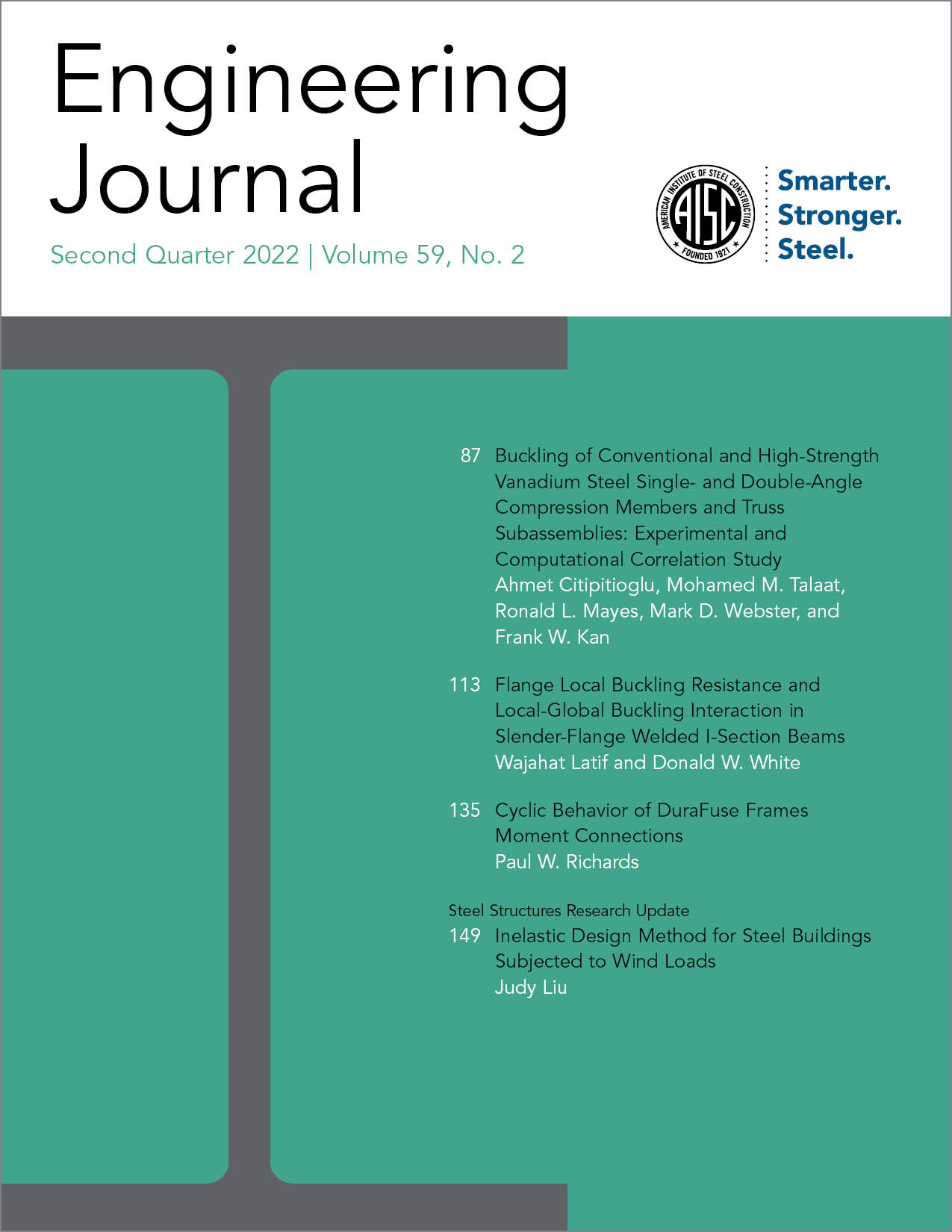Buckling of Conventional and High-Strength Vanadium Steel Single- and Double-Angle Compression Members and Truss Subassemblies: Experimental and Computational Correlation Study
DOI:
https://doi.org/10.62913/engj.v59i2.1188Keywords:
high-strength vanadium steel, compression, finite element analysis, buckling analysis, geometric imperfection, steel trussAbstract
High-strength, low-alloy vanadium (HSLA-V) steel offers higher strength and toughness than conventional steel. The resulting lighter weight and more slender structural members are more susceptible to buckling in compression. This study establishes an understanding of buckling in this material and the ability to predict it analytically. A series of conventional ASTM A572 Grade 50 steel and HSLA-V (nominal Grade 80) steel angle compression members were tested at Lehigh University’s Advanced Technology for Large Structural Systems (ATLSS) laboratory. A general-purpose finite element (FE) software was used in this study to simulate the buckling and post-buckling behavior of the structural members. The objective of these simulations was to establish confidence in the ability to accurately predict buckling response. The influence of the following modeling parameters on the accuracy of the compression angle member simulation results was investigated: variation in material stress-strain relationship, residual stresses, and the shape and magnitude of geometric imperfections. For the truss subassembly simulations, the influence of the following parameters was also investigated: bracing and boundary element stiffness and design code assumptions of end conditions.

